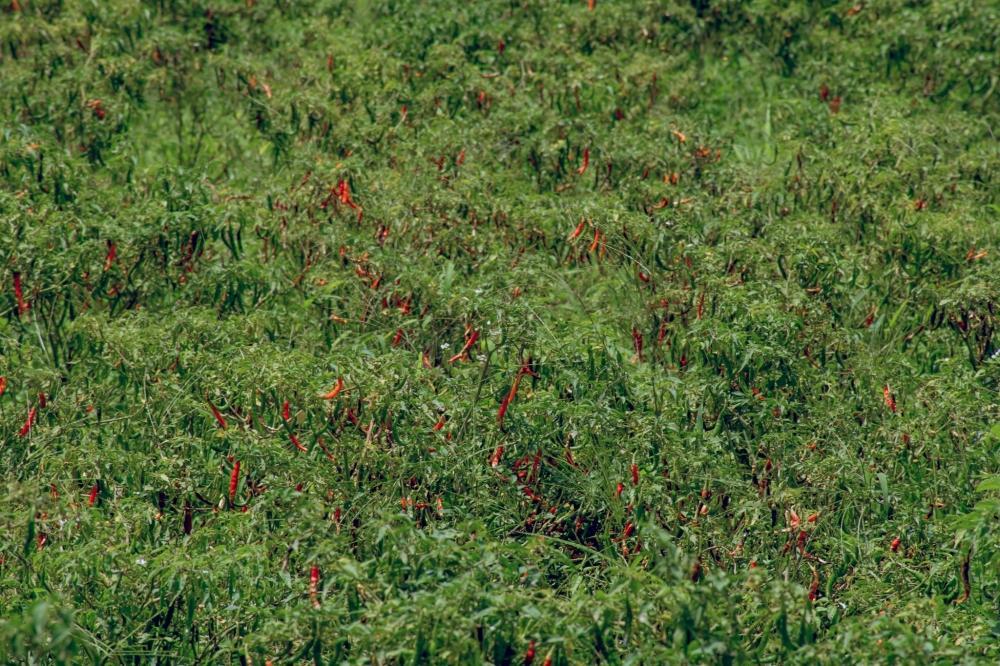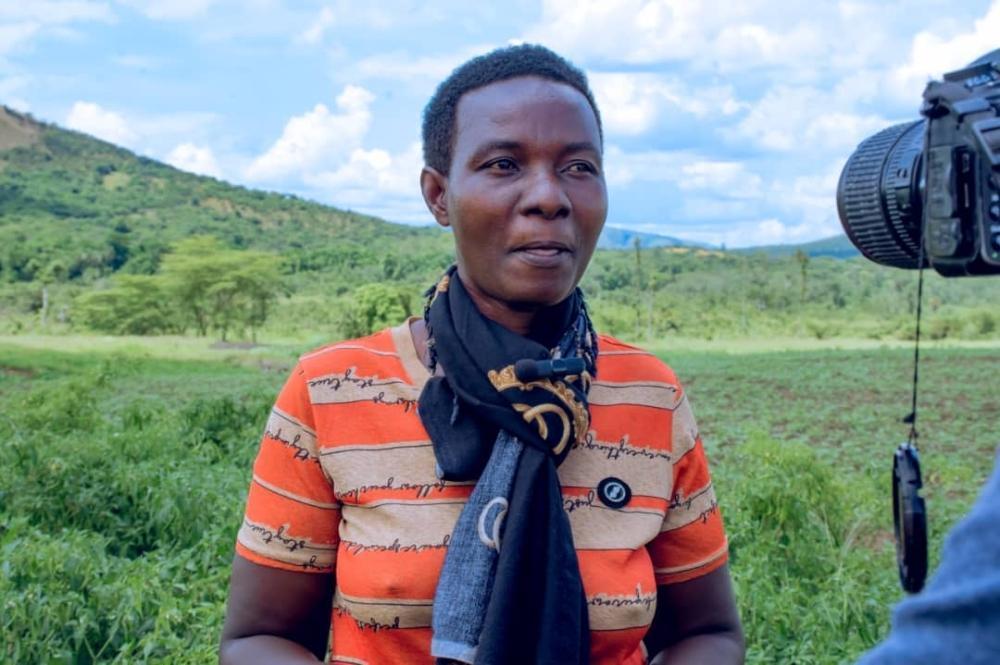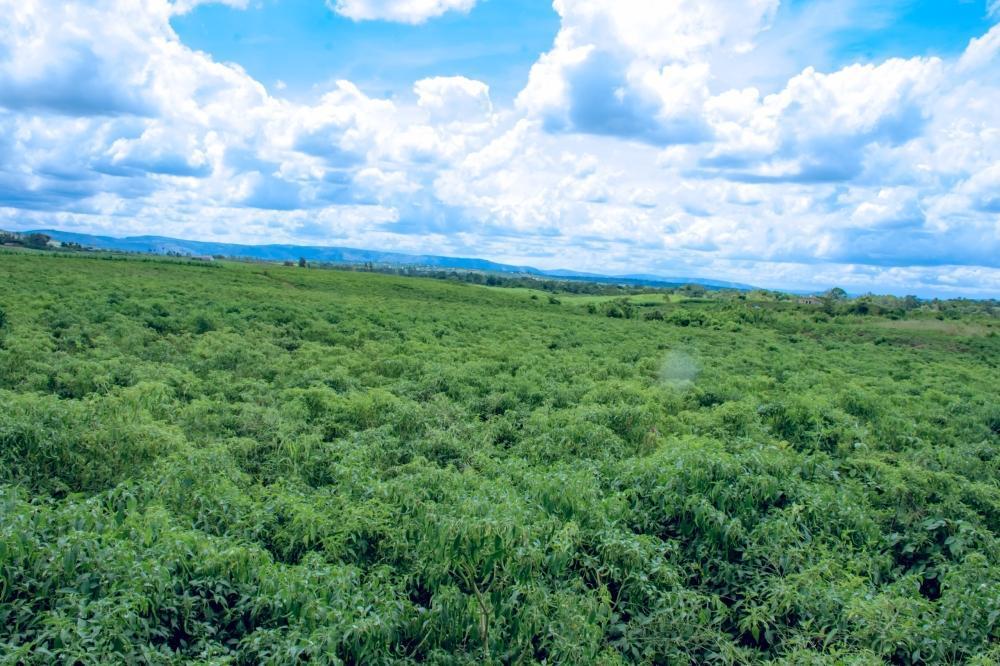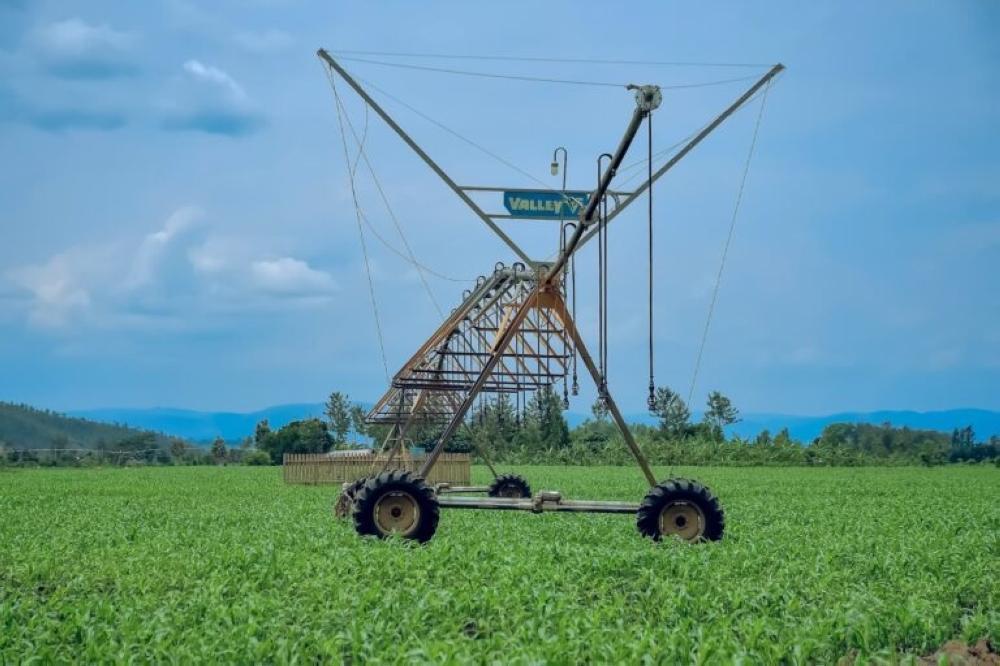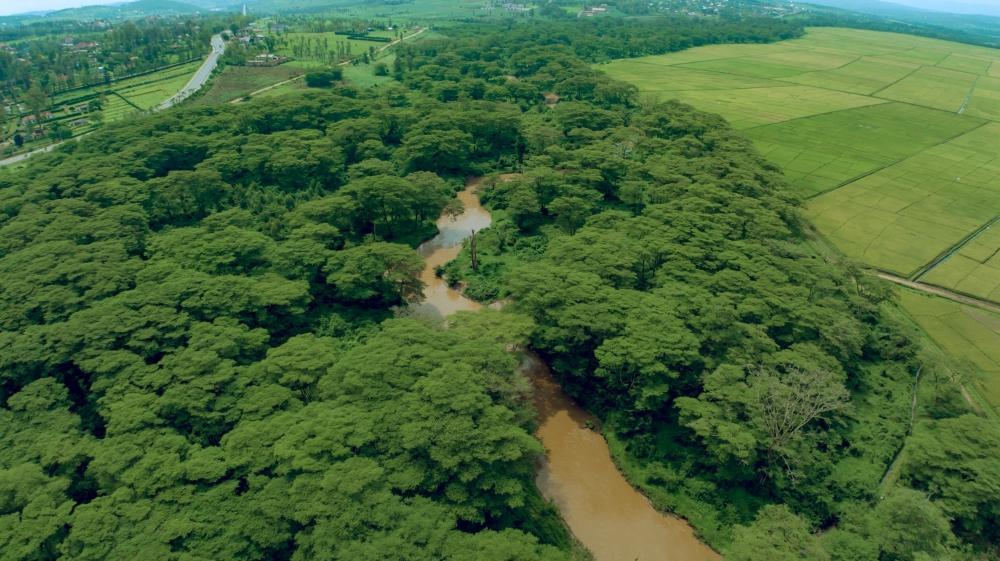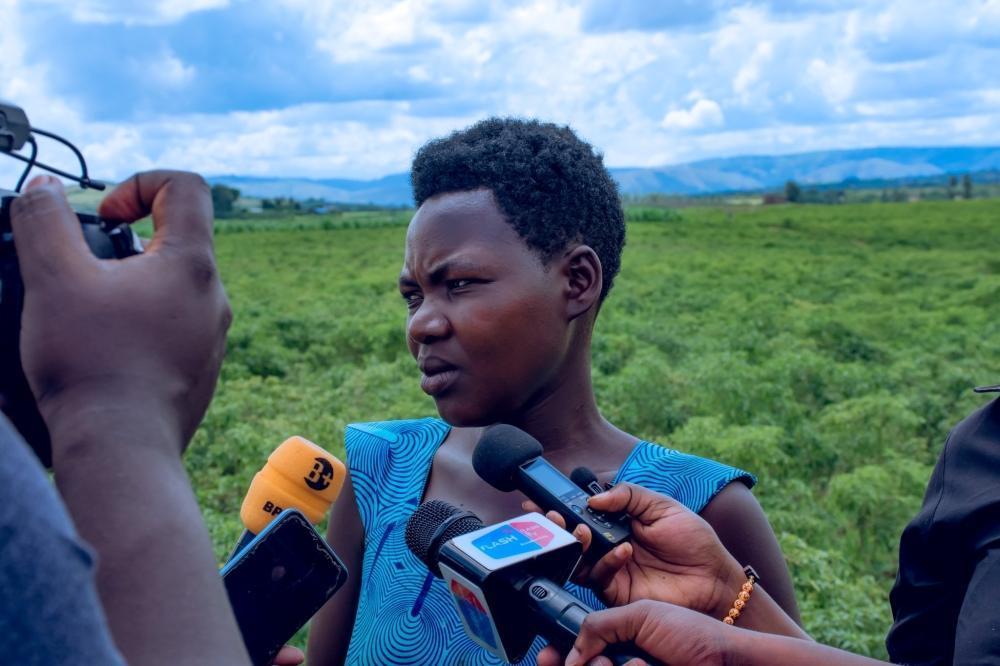Africa-Press – Rwanda. When Hillaria Mutuyimana was still practicing subsistence farming, she struggled to meet her family’s basic needs. Feeding her children, paying school fees, and accessing healthcare were constant challenges.
But two years ago, she took a chance on chili farming in the Kagitumba swamp in Nyagatare District, where her cooperative, KABOKU, was already growing maize and soybeans. That decision changed her life.
“Chili farming transformed my life,” Mutuyimana said. “I built a 27-sheet iron-roof house. I now pay health insurance on time, and my children are in school. Before, I relied on seasonal jobs and inconsistent harvests.”
Hillaria Mutuyimana, a chili farmer in Nyagatare district, said that shifting from subsistence farming to chili farming enabled her to construct 27 roof house. She advises other farmers to venture into chili
Members of the KABOKU cooperative, which has over 1,000 farmers, say chili farming has lifted them out of poverty, enabling them to construct homes, buy livestock, and pay for their children’s education.
This transformation is supported by the cooperative’s partnership with a private buyer who not only guarantees the purchase of the harvests but also supplies essential inputs like seeds, pesticides, and technical assistance.
“Chili farming helped me stop renting,” said Rose Uwingabire, another farmer. “I managed to build my own house. With technical support and available insurance schemes, chili farming can benefit anyone willing to put in the work.”
Despite the positive changes, farmers continue to face significant challenges. These include fluctuating and often low market prices, delays in accessing key inputs such as fertilizers and pesticides, and the increasing impact of climate change, especially prolonged dry spells.
Currently, chili farming in the Kagitumba swamp covers just seven hectares. However, with government and private sector support, the cooperative plans to expand production to 100 hectares in the coming years.
“I harvest around 17 tonnes of chili, but low prices and unstable markets are holding us back,” said Thomas Karekezi, who cultivates three hectares of chili.
“We need a better market system to make this business sustainable. Chili is profitable, but without proper field management and post-harvest handling, the losses can be devastating.”
Farmers are now calling on the government to reinstate subsidies for seeds, fertilizers, and pesticides, which helped them when they started chili farming. With subsidies support, they believe chili cultivation could further transform their livelihoods.
Officials in Nyagatare District say they are aware of the constraints and have put measures in place to address them.
Mayor Stephen Gasana said that through the Commercialization and De-Risking for Agricultural Transformation (CDAT), the district plans to rehabilitate irrigation infrastructure in the Kagitumba swamp to suppo
District Mayor Stephen Gasana said that through the Commercialization and De-Risking for Agricultural Transformation (CDAT) project, Nyagatare plans to rehabilitate irrigation infrastructure in the Kagitumba swamp to support year-round farming for chili farmers.
“Water shortage is a major challenge affecting yields, and we are committed to solving that,” Gasana said.
He added that a joint initiative between the National Agricultural Export Development Board (NAEB) and Korean partners seeks to establish modern chili drying facilities in the area.
“These facilities will improve crop quality, reduce post-harvest losses, and help farmers secure better prices, locally and internationally,” the mayor said.
A recent study by the Rwanda Agriculture and Animal Resources Development Board (RAB) and NAEB confirmed chili pepper as one of Rwanda’s most promising crops.
However, the report highlighted major gaps in irrigation, access to inputs, and farmer training. It noted that 65 per cent of chiller pepper farmers rely on substandard irrigation systems, which significantly reduces yields during dry seasons.
Currently, chili farming in the Kagitumba swamp covers just seven hectares. However, with government and private sector support, the cooperative says it can expand their plantation to 100 hectares.
Illuminee Kamaraba, Division Manager for Crop Post-Harvest and Processing Management at RAB, said the government is committed to tackling post-harvest losses in collaboration with partners.
“Programmes such as the Post-harvest and Agribusiness Support Project (PASP) have helped cooperatives acquire grain dryers, ensuring high-quality maize for the market,” Kamaraba said.
She added that Nyagatare District currently has 114 drying facilities and eight grain dryers, which were built with government support.
However, she acknowledged that not all maize is dried locally, as some farmers utilize facilities in the neighboring districts of Gatsibo and Kayonza, which are better equipped.
A solar powered irrigation system in Nyagatare.
KABOKU is a cooperative representing over 1,000 farmers engaged in the cultivation of maize, beans, soybeans, and now chili—a new venture that is steadily transforming livelihoods in Nyagatare.
For More News And Analysis About Rwanda Follow Africa-Press

